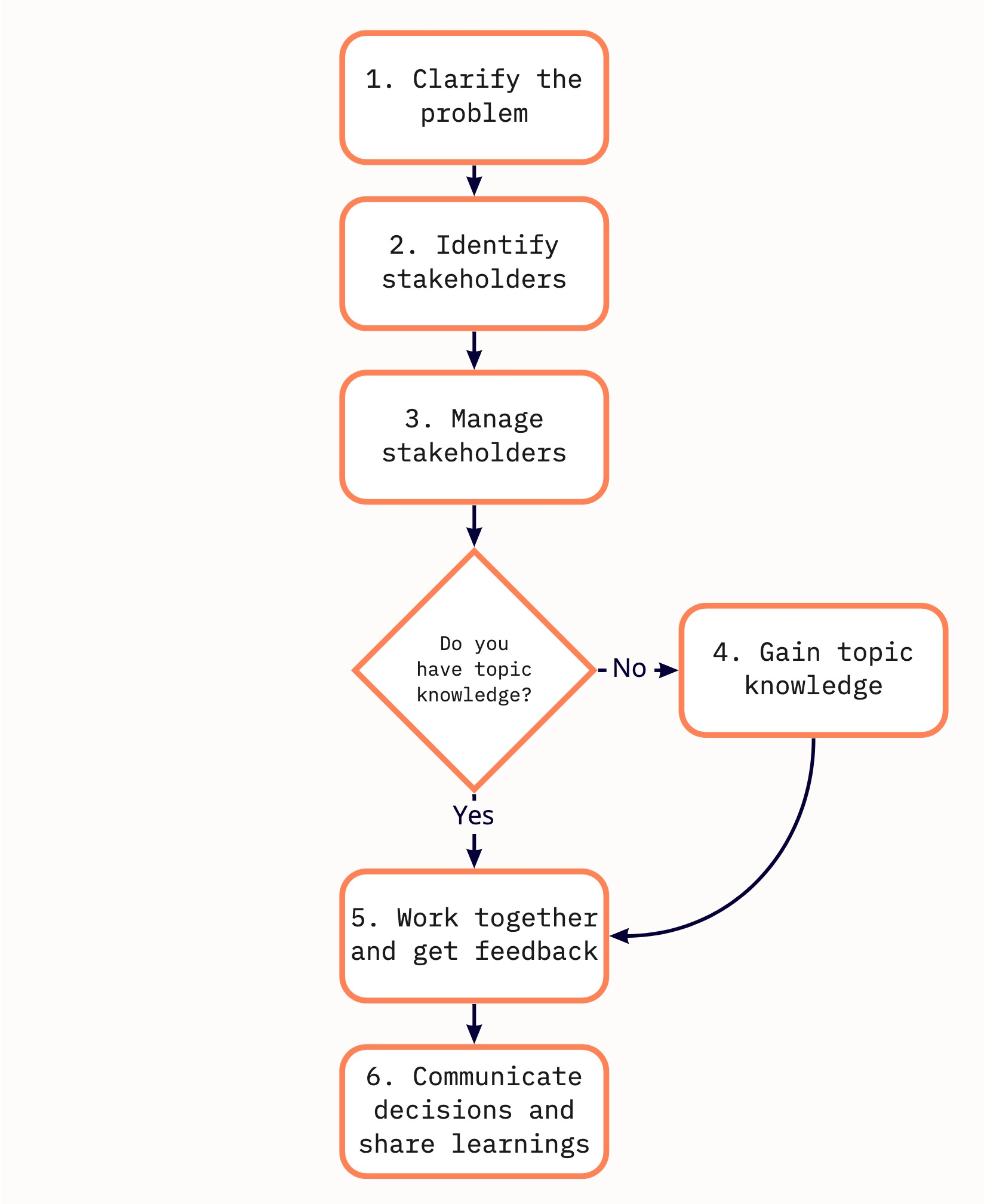Collaboration Playbook
The collaboration playbook is a collection of activities, articles and frameworks to help you through the 6 phases of the collaboration process. By using the resources in this playbook, you will be able to create a shared understanding of the problem and work together efficiently to create a high quality solution. This playbook was curated for people working in tech & product in mid-size companies but can be useful to anyone in any industry.
The flowchart below represents the relationship between the 6 phases:


1. Clarify the problem
2. Identify stakeholders
3. Manage stakeholders
4. Gain topic knowledge
5. Work together and get feedback
6. Communicate decisions and share learnings
Clarify the problem
Define the problem that needs to be solved and the expected outcome, together with your team. This will set you up for success before collaborating with others outside of your team.
- Have a shared understanding amongst your team.
- Clarify the "why" and "what" of the project.
- Set goals collectively as a team so that you are all aligned
Identify stakeholders
Understand who your stakeholders are and how you will involve them early in your process. This will enable you to get help, work together, and communicate at the right times.
- Have an understanding of who your project depends on and who depends on your project
- Form working agreements with stakeholders
Manage stakeholders
Align with your stakeholders and co-collaborators throughout the project. This will help you get feedback on your direction and manage people's expectations.
- Know who to involve and how to communicate at the right time and level
- Have a shared understanding of the problems and goals with your stakeholders
- Documented outcomes of decisions to keep track of what's being or has been decided
Gain topic knowledge
Learn from and involve the topic experts when you are unfamiliar with the problem space. This will help you avoid duplicate work and create a high-quality solution.
- Have a working knowledge of the topic. You do not have the be the expert
- Build your network with topic experts
Work together and get feedback
Share your progress early and incorporate other people's feedback into the solution. When people work together, they create a more holistic solution than they could on their own.
- Established expectations with your stakeholders and co-collaborators on how you'd like to work together and get feedback.
- A solution that is a blend of ideas, inputs, and feedback that has been agreed upon by co-collaborators and stakeholders.
Communicate decisions and share learnings
Document key decisions, learnings, and follow up plans. This will help people stay informed, avoid duplicate work, and enable others to build on top of your work.
- A communications plan detailing how you'll share critical information, decisions, and learnings.
- Documentation for onboarders on this history of the project.
Created by Alexa Kaminsky
Share a resource that's a good fit for the playbook.